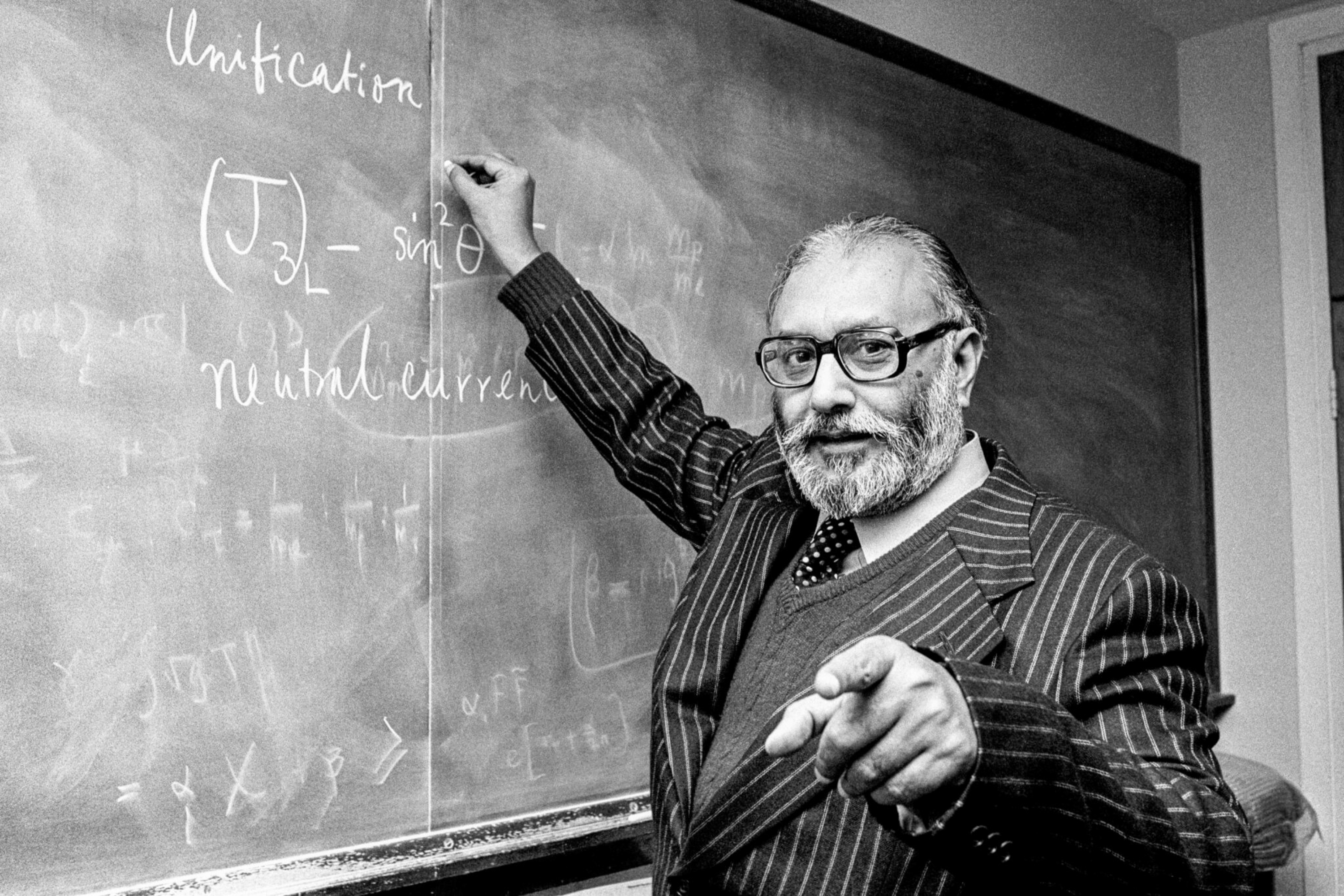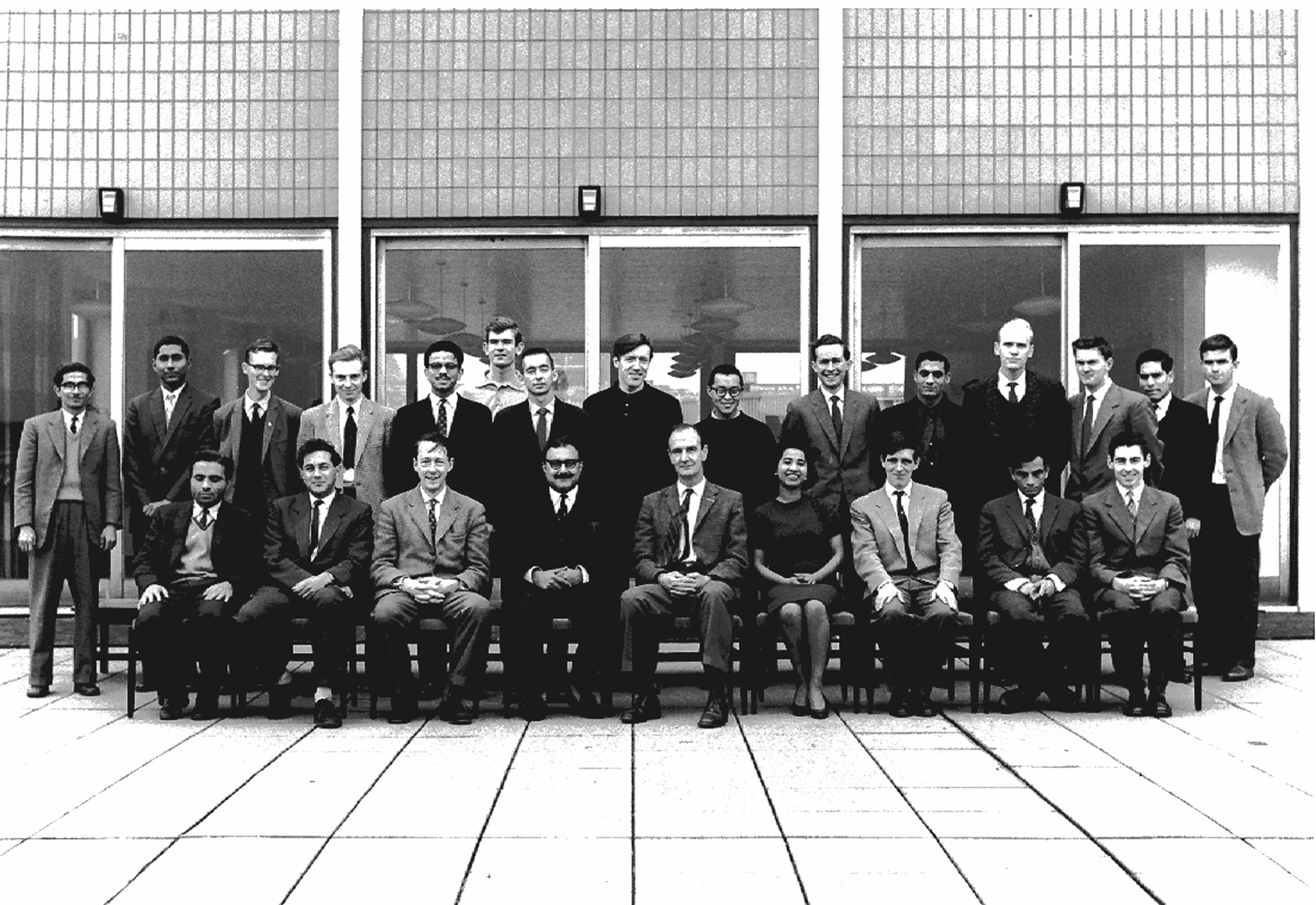Professor Abdus Salam (1926-1996), Nobel Prize in Physics 1979
Nobel Prize-winning theoretical physicist, Abdus Salam, was the first Pakistani and first Muslim Nobel Laureate of science.
Throughout his career he made a huge contribution to the world of science, including here at Imperial College London. Imperial’s Central Library has been named the Abdus Salam Library in his honour.

Early life and work
After outstanding success in his early education in Pakistan, Abdus Salam took his first degree and PhD in Physics at the University of Cambridge. In his PhD work he solved a major outstanding problem on renormalisation, which lead to an invitation to the Institute for Advanced Study at Princeton in 1951. He optimistically returned to an academic post as Professor of Mathematics at the University of Lahore and in 1952 as Head of Mathematics at the University of Punjab but found the lack of support for progressing his academic work intellectually stifling. Besides this personal frustration, he witnessed an increase in the persecution of his religious beliefs. This led him to reluctantly leave Pakistan. He returned to Cambridge as Lecturer in Mathematics in 1954. In 1956 he was the first to recognise that the neutrino should only exist in a left-handed spin state, but after the idea was rejected by famous physicist, Wolfgang Pauli, he delayed publication until after Lee and Yang’s work on parity violation.
Salam at Imperial & Nobel Prize Work
Salam was appointed as a Professor at Imperial College London in 1957, initially in Mathematics before moving to Physics in 1960. Together with his colleague Paul Matthews, he built up a distinguished world class theoretical physics group, which rapidly became an international centre for research on quantum field theory, attracting many academic visitors including several future Nobel Prize winners. An early hire, Tom Kibble, would go on to co-discover the Higgs mechanism, and explain how cosmic strings can be formed in symmetry-breaking transitions early in the history of the universe.
 The Theoretical Physics Group in 1964. Abdus Salam is in the middle of the front row, wearing glasses, and next to him is Tom Kibble.
The Theoretical Physics Group in 1964. Abdus Salam is in the middle of the front row, wearing glasses, and next to him is Tom Kibble.
The two main themes in the group at the time were symmetries and unification. In 1964, with John Ward, he identified the symmetry SU(2) x U(1) of the electroweak theory, a result independently obtained by American theoretical physicist Sheldon Glashow. In 1967, Salam incorporated the Higgs mechanism, co-discovered by his Imperial colleague Tom Kibble, into the electroweak unification. He gave a series of lectures on the complete electroweak theory in the autumn of 1967, but did not publish until the spring of 1968 in the Proceedings of a Nobel Symposium. Comparable work had simultaneously been carried out by American theoretical physicist Steven Weinberg, who together with Glashow was to share the Nobel Prize with Salam in 1979.
The Theoretical Physics Group rapidly attracted a large number of PhD students, and also developed, a one-year postgraduate course, initially leading to the Diploma of Imperial College (DIC). This then evolved into a fully-fledged MSc course on Quantum Fields and Fundamental Forces, which is one of the leading courses on the subject and continues to attract large numbers of students from around the world. Today, the Group is one of the world's leading centres for the study of string theory, quantum field theory and cosmology, and has a strong commitment to scientific outreach.
Ongoing international and scientific legacy
In his continuing commitment to Pakistan, Salam was appointed Science Advisor by President Ayub Kahn. In this role he created a space research organisation, investigated pressing needs for improved agricultural methods, developed atomic energy for Pakistan and was appointed Pakistan's delegate to the General Council of the International Atomic Energy Agency. In 1964, his experience led him to create his great achievement in international scientific collaboration, The International Centre for Theoretical Physics in Trieste (ICTP), with the assistance of the then Italian government and UNESCO. The now renamed Abdus Salam ICTP enables scientists from developing countries to work with established scientists from the developed world, to increase their knowledge and become part of the international physics community.
Salam published prolifically throughout his career. In 1973 he proposed, with Jogesh Pati, one of the first Grand Unified Theories, uniting leptons and quarks. They were the first to suggest in the context of a specific model that the proton might be unstable, though with a lifetime much longer than the age of the universe. Throughout the 1970s and 1980s Salam and his collaborators made major contributions to the development of supersymmetry, supergravity and Kaluza-Klein theories that continue to impact current research in high energy physics and cosmology.
In 2023, Imperial officially renamed its Central Library to the Abdus Salam Library, honouring Salam's humanitarian and scientific legacy. As part of the renaming ceremony, Imperial produced a biographical exhibition about Salam's life (which can now be viewed online) as well as a documentary about Salam's life at Imperial. Professor Brian Cox delivered a public lecture on Salam's scientific contributions to fundamental physics, which also featured Director of the ICTP, Professor Atish Dabholkar, and Professor Claudia de Rham.


